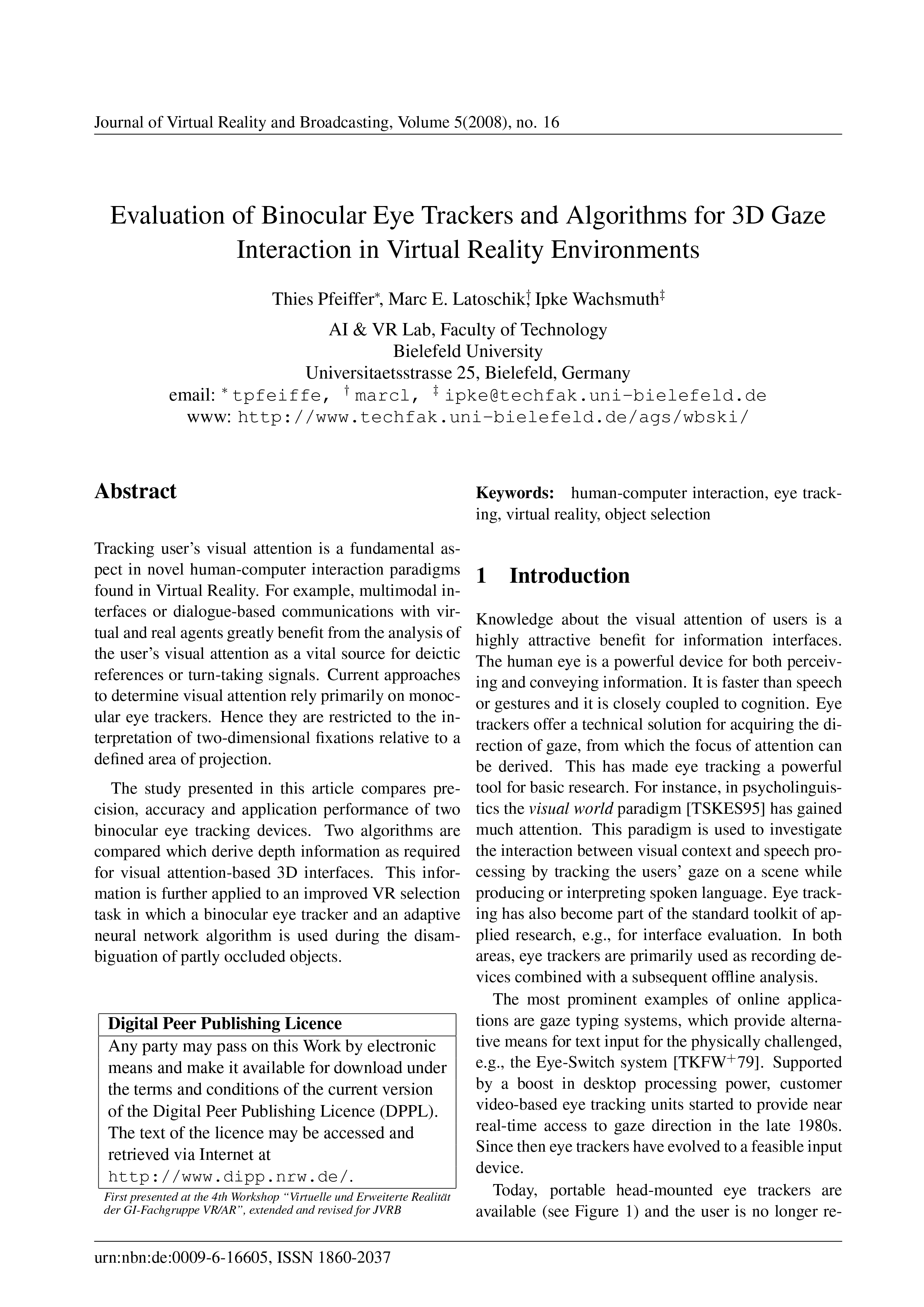Evaluation of Binocular Eye Trackers and Algorithms for 3D Gaze Interaction in Virtual Reality Environments
DOI:
https://doi.org/10.20385/1860-2037/5.2008.16Keywords:
Eye Tracking, Human-Computer Interaction, Object Selection, Virtual RealityAbstract
Tracking user’s visual attention is a fundamental aspect in novel human-computer interaction paradigms found in Virtual Reality. For example, multimodal interfaces or dialogue-based communications with virtual and real agents greatly benefit from the analysis of the user’s visual attention as a vital source for deictic references or turn-taking signals. Current approaches to determine visual attention rely primarily on monocular eye trackers. Hence they are restricted to the interpretation of two-dimensional fixations relative to a defined area of projection. The study presented in this article compares precision, accuracy and application performance of two binocular eye tracking devices. Two algorithms are compared which derive depth information as required for visual attention-based 3D interfaces. This information is further applied to an improved VR selection task in which a binocular eye tracker and an adaptive neural network algorithm is used during the disambiguation of partly occluded objects.
Published
2008-12-10
Issue
Section
GI VR/AR 2007





